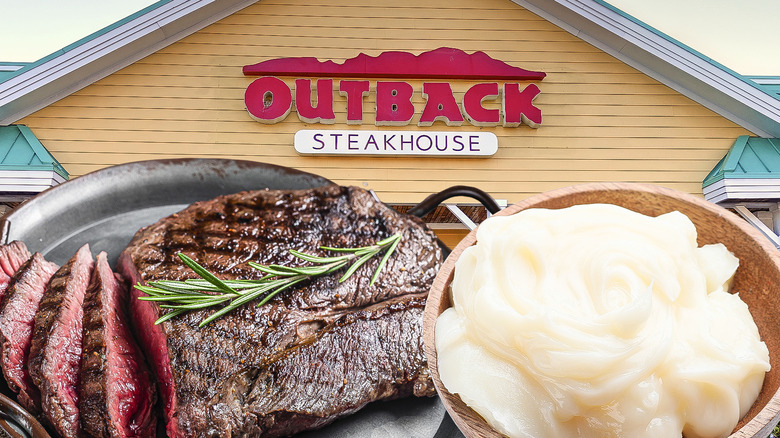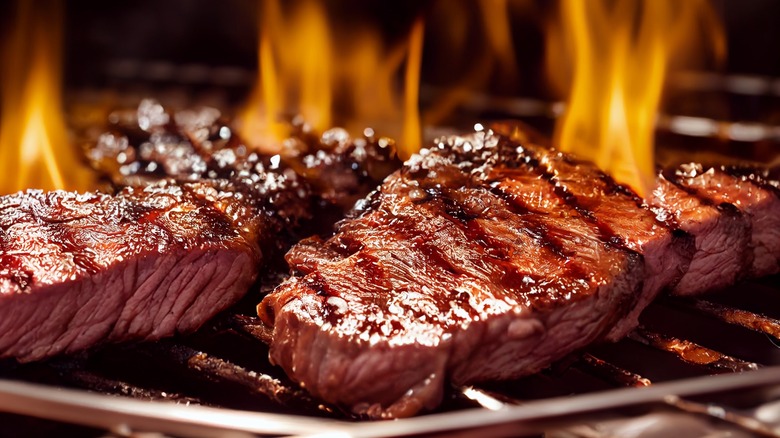We Finally Know Why Outback Steakhouse's Steaks Are So Flavorful
High-end steakhouses have an undeniable charm with their dark wood, thick steaks, deep wine lists, and classic cocktails. Along with all that ambiance, though, comes a hefty price tag. Budget-friendly and ubiquitous steakhouses fill this void by providing quality cuts, convivial confines, and a price point that won't make one feel like they're being raked across the coals. Perhaps the most famous of the bunch is Outback Steakhouse, the nominally antipodean-themed eatery known best for the calorie-dense Bloomin' Onion. But those steaks get top billing, and they certainly do smack with flavor. What's Outback's secret? Tasting Table went to the source to find out.
We spoke to Chef Efrem Cutler, the VP of Research & Development for Outback's parent company Bloomin' Brands. He filled us in on what the company does — and doesn't do — to ensure that the steaks they serve satisfy. A persistent rumor on places like TikTok is that Outback cooks its steaks in beef tallow for a more pronounced flavor, but that's just not the case. "We cook our steaks with butter," says Cutler.
Butter is frequently the fat of choice for steak chefs. While beef tallow may seem like a good choice, it can be redundant as most steaks are already bursting with fat and flavor. Butter offers a round nuttiness that gives further dimension to the savory meat beneath.
Selection and seasoning are key
Fat is far from the only key to cooking a great steak, and Outback knows this. The process starts with selecting the meat, which the company takes very seriously. "We are SERIOUS about steaks and only choose the finest marbled, tender, and juicy steaks for our guests," Efrem Cutler explains. "We have trained Steak Experts crafting and executing our steaks to the highest standards."
Marbling is one of the most important factors determining how a steak tastes. The veins of intramuscular fat carry flavor throughout the cut, which is why typically richer cuts, like ribeye, have a more robust flavor when compared to leaner cuts, like filet mignon. Finding that perfect balance of meat and marbling is important and will vary between steaks, so it is critical to have a well-trained staff of buyers and butchers who know what to look for.
The final element of the equation is seasoning the steak, which electrifies the spectrum of flavors in the meat. There is no shortage of folks who preach the gospel of extreme restraint in steak seasoning, with only salt and pepper gracing the meat, but that's just one approach. While Cutler wouldn't divulge exactly what Outback uses to season its steaks, he did tell us that the focus is on elevating the experience. "We have proprietary seasoning for all of our steaks," Cutler says, "and they are bold and full-flavored, enhancing the beefy taste of our steaks."

